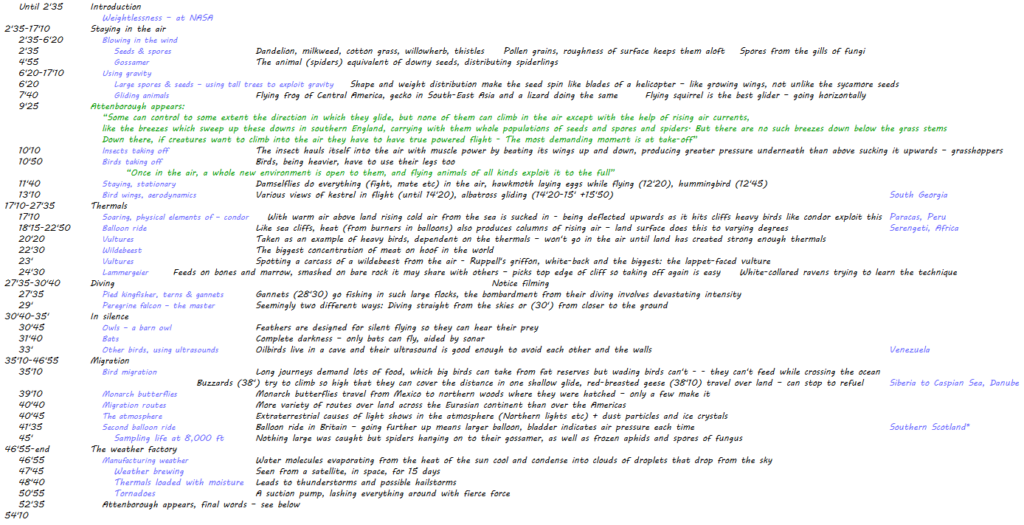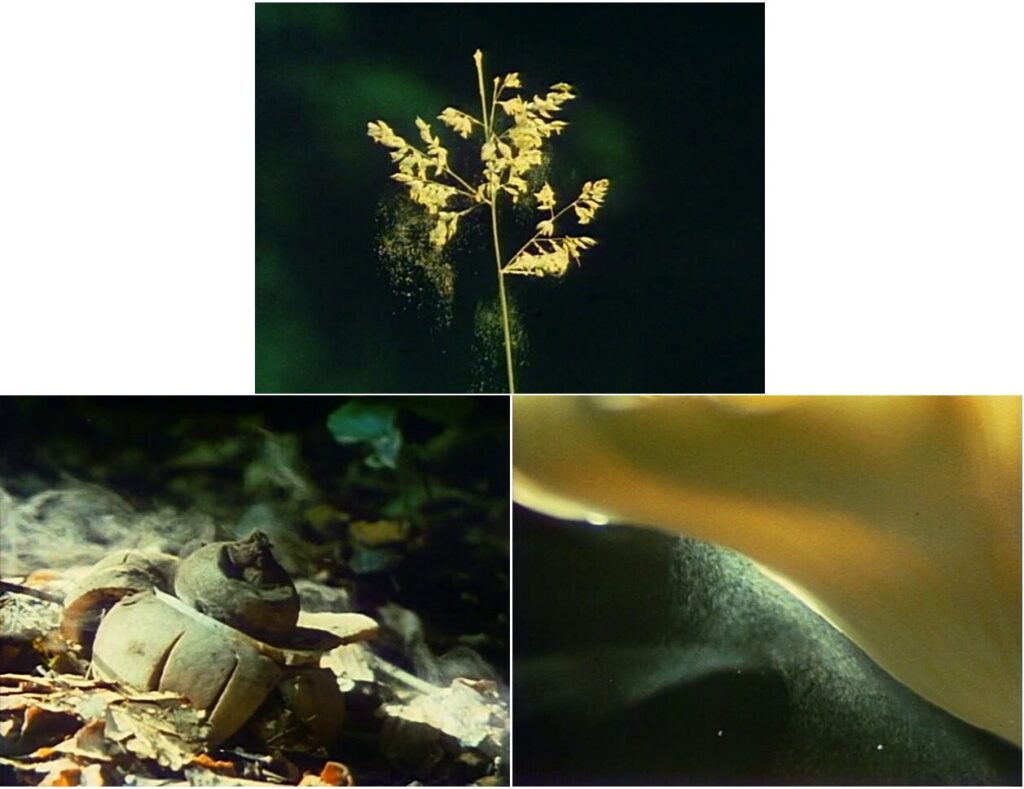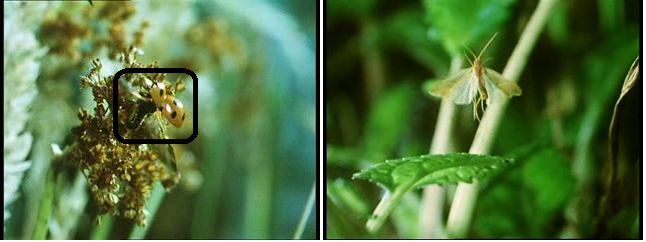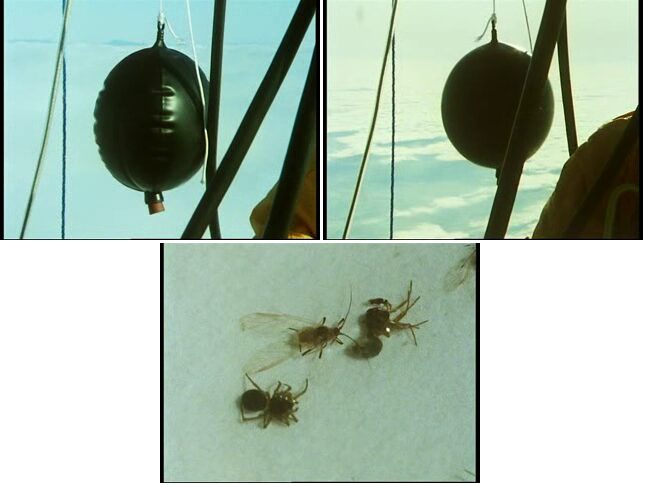Original air date: 8 March 1984


Selected sequences
Blowing in the wind ? (4’35-4’50)

Pollen grains don’t even need wind to keep them in the air. Roughness of their surface and tiny size is enough (top). Same applies to spores from fungi (bottom).
Gossamer, the animal equivalent of the plants (5’05-5’11)

Gossamer, layered over the grassland, and tiny spiderlings that use it to reach distant locations
Most other animals apply force

Apart from spiders, due to their use of gossamer, more or less all animals have to apply force to get into the air, because they are stuck where there is no wind (Attenborough’s introductory words for this part) or they are too heavy to make use of it. Insects usually use their wings as do birds. The ladybird (on the left) in encircled because it might not be so easily spotted in a single frame – easier in a sequence where it moves.
Staying stationary in the air

Hummingbird (left, 12’55) and a kestrel (13’10-14’20) hanging in the air. Most incredible filming. Technically the frames are taken from a higher resolution (480 pixels). The locations are based on lower one, strangely those are dependent on one another.
Second balloon ride
In the second balloon ride the team were heading much higher than in the first one. The aim of the first ride was merely to introduce thermals and get an overview of the animal life from above. This time they meant to show life at much higher altitudes (almost the height of Mt. Everest). Tiniest signs of life, like plant spores and possibly smallest animals can at these heights travel vast distances and reach farthest places as shown in the final part of the start of this series (life always returns).

Top images show the rubber bladder near ground level and then at altitude. Bottom image shows typical animals at this altitude, mainly spiderlings but also occasional frozen aphids.
Coming up:
Having shown in a few minutes what happens to moisture in the clouds a drop of rain is followed as it may end up either as a piece of hail or as a drop of rain Attenborough ends up speaking on camera the introductory words for next episode:
“Storms like that may bring death and destruction, but they also bring life, because the rain that comes from them, distilled by the sun from the surface of the ocean is fresh water, salt-free, and that is something that all life on land must have. And when that rain, that sweet fresh water, accumulates in rivers and lakes, then it supports a community of plants and animals all of its own, and it’s those communities that we’re going to be looking at in the next programme.”
* The location given for the second balloon ride is taken from his book (Life on Air, page 305). Usually they are taken from the programme itself.